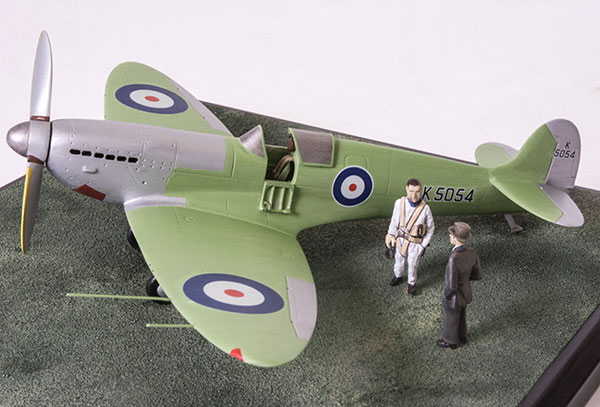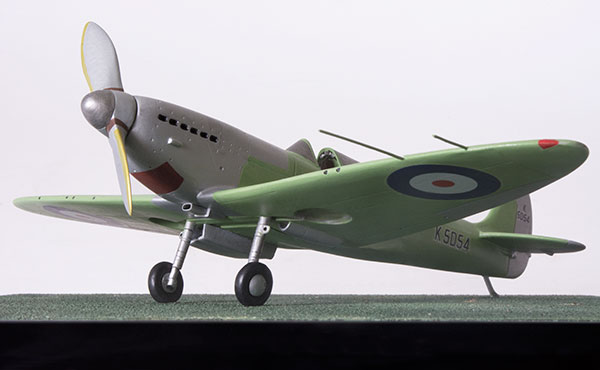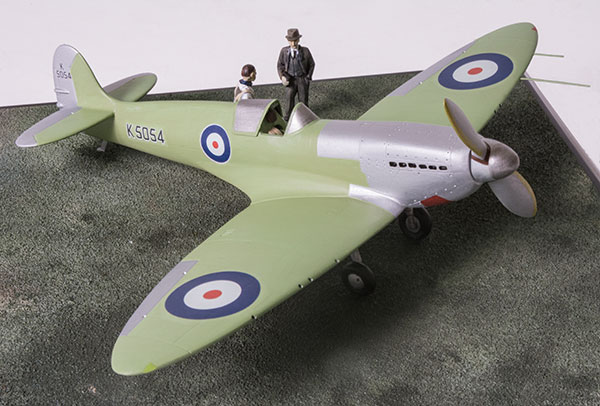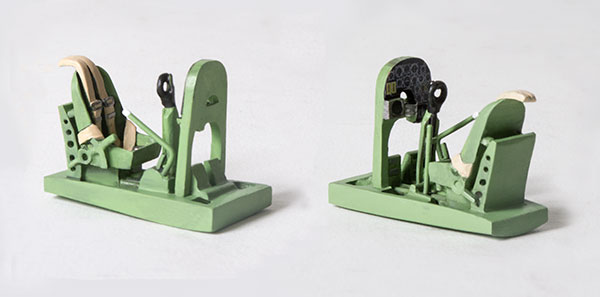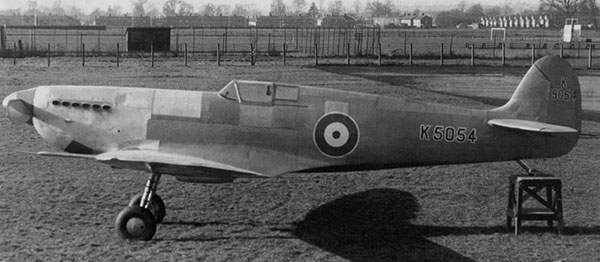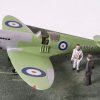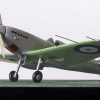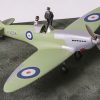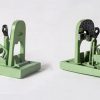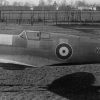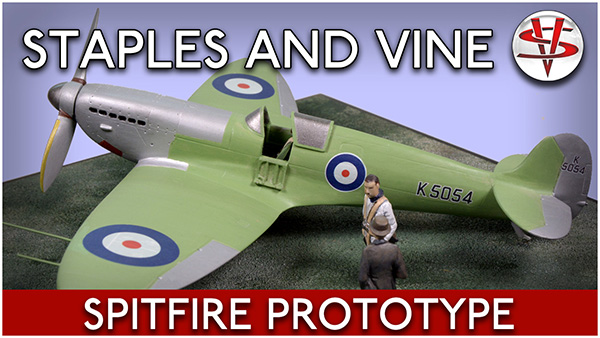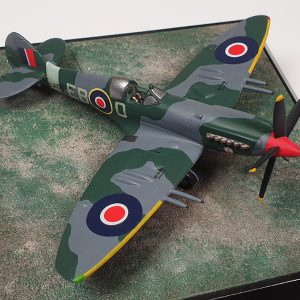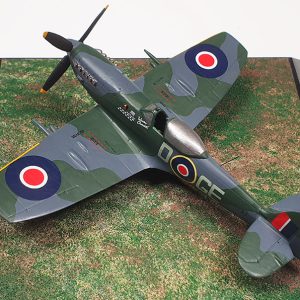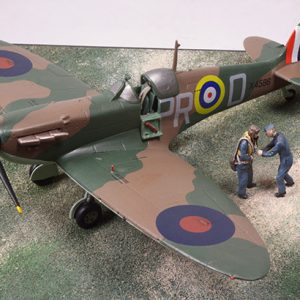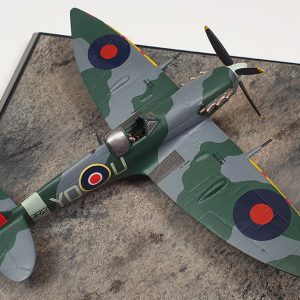Supermarine F37/34 Type 300 Spitfire Prototype K5054
‘Mutt’ Summers, Eastleigh Aerodrome, March 5th 1936
FIND OUT MORE ABOUT THE SPITFIRE PROTOTYPE
ON MY YOUTUBE CHANNEL BELOW
Some of the people associated with the Spitfire, notably its Chief Designer R J Mitchell, have become almost as much of a legend as the aircraft. Born in Stoke-on-Trent in 1895 he developed an early interest in aviation and on leaving school started an engineering apprenticeship, though with no aviation opportunities in the area this was in a locomotive works; he studied engineering and mathematics at night school. Toward the end of 1916 he answered an advertisement for an assistant to Hubert Scott-Paine, Managing Direction of the newly formed Supermarine at Woolston in Hampshire; Scott-Paine was so impressed with the interview that he engaged Mitchell on the spot, and for the next two years he filled a variety of roles around the factory including some time as Deputy Works Manager.
He was appointed Chief Designer of Supermarine in 1919, to which was later added the title of Chief Engineer; for some time the company’s main products were flying boats and seaplanes, and was responsible for the succession of floatplanes that represented Britain in the Schneider Trophy races. It was this series of racers and their success in the international event that brought Mitchell’s name to a level of public attention unusual in his profession, and this was to be enhanced, if posthumously, by the “newsworthiness” of the Spitfire from the time of its introduction to squadron service. If his early fame rested on the Southampton flying boat and the Schneider competitors, with the appearance of the type 300 and its developments, before the first production Spitfire had flown he had initiated or overseen eighty designs by the time of his death in July 1937.
The modernisation of Britain’s fighter force was to be started by Specification F.7/30, which called for a maximum speed of more than 250 mph, with a “steep” rate of climb and a landing speed of 50 mph. or less. The engine was to be the Rolls-Royce Goshawk, a version of the proven Kestrel favoured by the Air Ministry with its cooling now provided by a evaporative system developed by Rolls-Royce. Mitchell’s first venture in to the fighter field, on which it was hoped to make use of some of the “high speed” knowledge gained through the development of the Schneider Trophy seaplanes, was the Supermarine 224. This was a monoplane with a gull wing with straight leading and trailing edges, and a trousered undercarriage housing two of its four machine guns – the other pair were in the nose – and an open cockpit. K2890 flew at the Hendon display on 30 June carrying the number 2 in the New Types park; its performance like that of its competitors to the same specification fell below the requirements, with a recorded top speed of 228 mph and a time of 9.5 minutes to climb to 15,000 ft. While there were several proposals to improve it on which Mitchell was working even before it flew were considered none were accepted for development, and the 224 was never submitted for official evaluation. The name Spitfire was applied to it unofficially by Vickers but it was not adopted and faded from use. In July 1935 K2890, the sole example, was flown to RAE Farnborough, where it served as an “hack”, before being taken to Martlesham Heath in May 1937 en route to becoming a target at Orfordness.
K2890’s maiden flight had been made at Eastleigh by Joseph ‘Mutt’ Summers on 19 February 1934; this was his thirteenth “first flight” as Chief Test Pilot of Vickers-Armstrong, which had acquired Supermarine in 1928. He had joined the RAF in 1924 and went to 29 Squadron at Duxford, flying Snipes and Grebes. His flying skills led to his posting to the test establishment at Martlesham Heath after six months on the squadron, and in 1929 he asked for release from the service to take up the post at Vickers. His later first flights included those of the Wellington, the Viscount and the Type 660 Valiant, this last in May 1951, and he had been very involved in the development and testing of the Barnes Wallis Upkeep and Highball “bouncing bombs”. He handed over the CTP post to Jock Bryce later in 1951, having made fifty-six first flights of prototypes and flown over five thousand hours in three hundred and sixty-six types. He died in 1954 at fifty.
The Spitfire Prototype K5054, is an airframe that has become an icon in its own right, was been built at Supermarine’s Woolston works, where it undertook engine runs in 18 February 1936 before being dismantled and taken to Eastleigh for its first flight. This took place at Eastleigh on 5 March 1936 in the hands of ‘Mutt’ Summers, who reported no snags after the fifteen minutes’ airborne. At this stage it was largely unpainted, and flew with a two-bladed fine fixed pitch propeller and no fairings on its undercarriage legs. It was demonstrated to the press on 18 June by Supermarine chief test pilot Jeffrey Quill, who went on to became synonymous with the aircraft’s development, notably in the early part of the war. K5054 had received an initial overall finish of either pale grey or pale blue, the exact colour still being a source of considerable discussion, and 27 June it appeared in the New Types park at the Hendon display, wearing a large black number 2; it was officially named “Spitfire” by the Vickers board, a name which Mitchell was said to have disliked but which was accepted by the Air Ministry.
During its development some changes were made, including the replacement of the original Merlin C by a Merlin F, the addition of a pitot head under the port wing and the installation of a tailwheel in place of the original skid. In September 1937 it was brought nearer to the production standard, with a Merlin II and the new dark green/dark earth camouflage finish. The Spitfire Prototype K5054 returned to Martlesham Heath in October for use as a trials aircraft for equipment to be used in the production aircraft, and was transferred to Farnborough in November 1938. It came to an untimely end on 4 September 1939, the day after the outbreak of the war in which the Spitfire was to play such a significant part; Flt/Lt. G White became the Spitfire’s first fatal serving RAF victim when on landing at Farnborough the aircraft ground-looped and turned on its back, killing the pilot. At the time of the accident the Spitfire Prototype K5054 had flown 151 ½ hours.
Together with its contemporary the Hurricane Prototype the Sptfire would form the backbone of RAF Fighter Command as the Spitfire Mk I and Hurricane Mk I in the ‘Battle of Britain’.
It is said that the name “Spitfire” came from a senior member of the Vickers board, who described his daughter as a “proper little spitfire” because of her fiery character and personality. It’s known that R J Mitchell disapproved of the name, and is said to have suggested or supported the alternatives of “Shrew” or ”Scarab” for the Type 300. No less than twelve fighting ships of the Royal Navy had carried the name Spitfire, the last being a destroyer around 1912.


